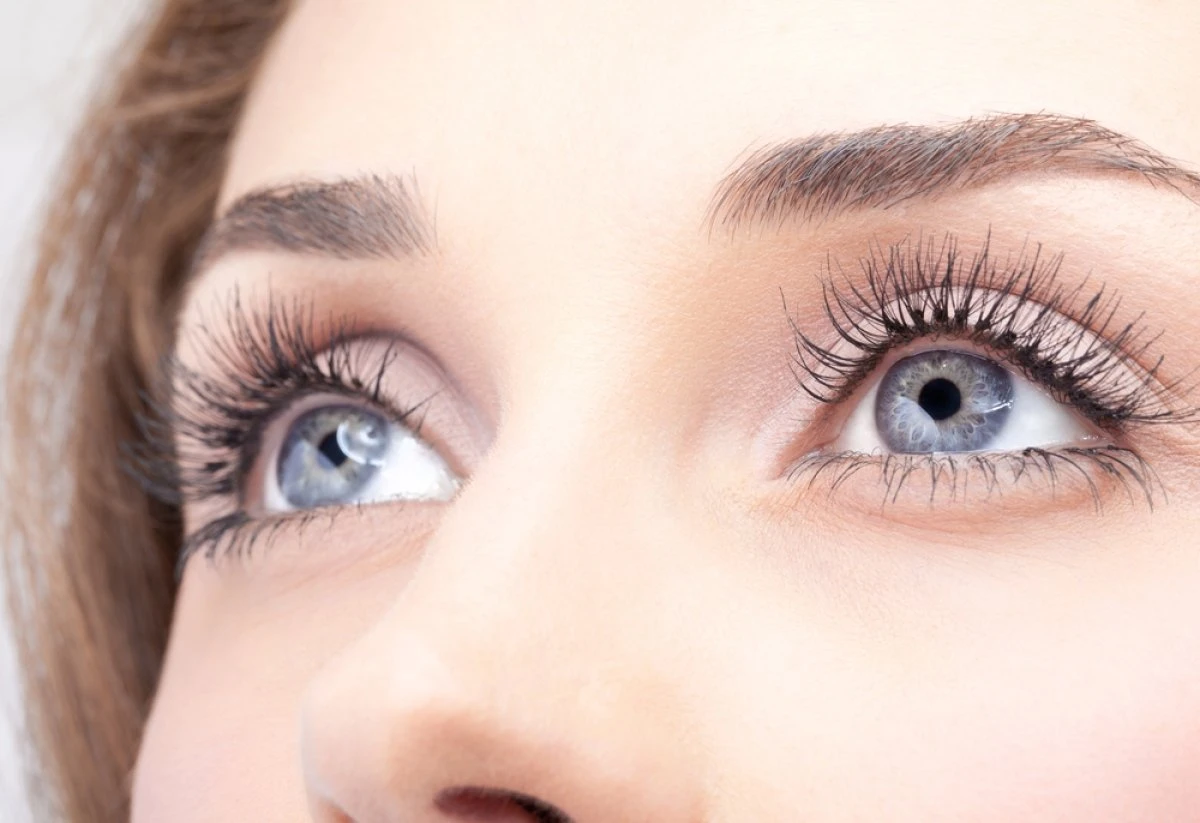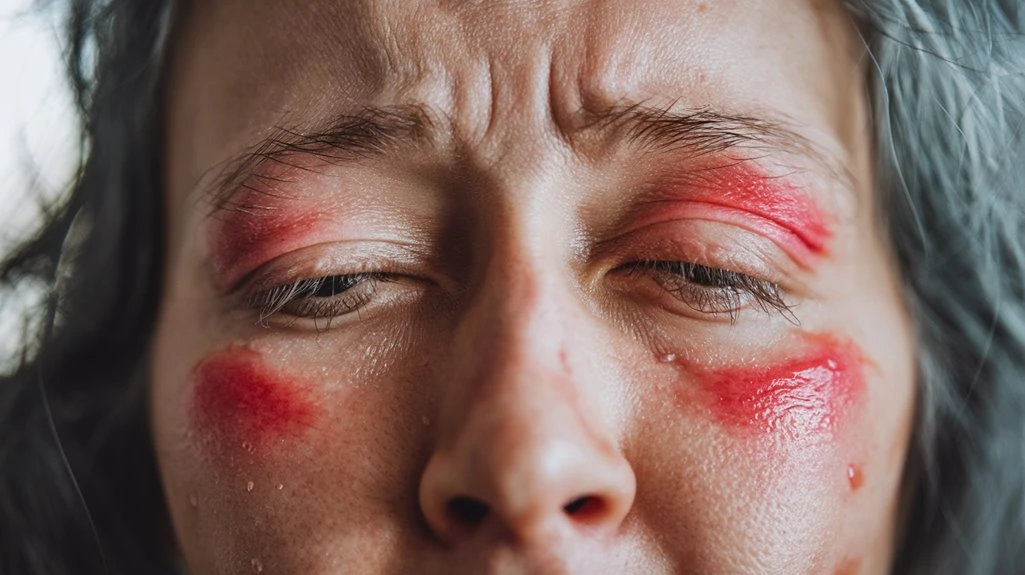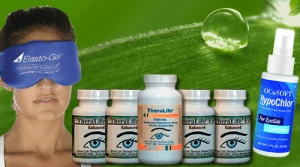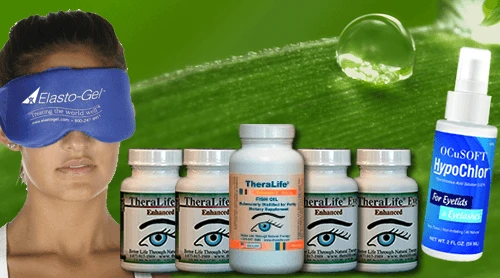If you’re experiencing a burning sensation in your eyes, it might be due to blepharitis, a chronic inflammation at the eyelid margin. This condition can cause discomfort such as irritation, redness, and crusting at the lash line. Fortunately, TheraLife offers a range of products that can help alleviate these symptoms.
TheraLife’s products focus on restoring the natural balance of your tear film and reducing inflammation. By targeting the underlying causes of blepharitis, including gland dysfunction and ocular surface irritation, TheraLife provides relief from symptoms like swelling, light sensitivity, and watery eyes. Their holistic approach also helps manage triggers such as dry environments, makeup use, and dietary factors.
Customers have found success in using TheraLife’s products, as they offer a natural and effective method to manage and treat blepharitis and its associated discomfort. By understanding the symptoms and utilizing TheraLife’s solutions, you can better manage your condition and find relief.
Best Blepharitis/MGD Treatment From TheraLife- When Drops Don’t Work.
Key Takeaways
- Blepharitis commonly causes a persistent burning or stinging sensation around the eyelid margins and ocular surface.
- Redness, swelling, and crusty debris along the lash line are hallmark signs of active blepharitis.
- Meibomian gland dysfunction leads to an unstable tear film, resulting in watery eyes and increased light sensitivity.
- Regular eyelid hygiene with warm compresses and gentle cleansing helps manage symptoms and prevent recurrences.
- Persistent burning or worsening symptoms require evaluation by an ophthalmologist to rule out complications.
Understanding Blepharitis and Its Causes
Although blepharitis presents as chronic inflammation of the eyelid margins, it arises from several distinct etiologies, including bacterial colonization, seborrheic dermatitis, and dysfunction of the meibomian glands.
You’ll notice that excessive bacterial growth near the lashes often triggers an inflammatory response, while seborrheic dermatitis contributes through altered sebum production and skin flaking.
Meibomian gland dysfunction reduces the lipid layer stability, leading to tear film evaporation and further irritation.
Implementing blepharitis prevention strategies, such as consistent lid hygiene and warm compresses, reduces microbial load and unblocks meibomian glands.
Treatment options include topical antibiotics to target bacterial overgrowth, anti-inflammatory agents for severe inflammation, and artificial tears to support tear film integrity.
Early recognition and management optimize patient outcomes and decrease symptom recurrence.
A combination of home treatments including warm compresses, eyelid massage, and appropriate eyelid cleansers, can significantly alleviate symptoms and improve eyelid hygiene.
Recognizing the Burning Sensation in Blepharitis
A hallmark symptom of blepharitis is the persistent burning sensation affecting the eyelid margins and ocular surface. When you experience burning sensations, they’re often described as an ongoing irritation or stinging around your eyes, rather than a sharp pain. This form of ocular discomfort is typically exacerbated by environmental factors such as wind, smoke, or prolonged visual tasks, which can disrupt the tear film and lead to increased evaporation. Clinically, this burning is attributed to chronic inflammation of the eyelid margins, contributing to altered tear composition and increased surface sensitivity. You may notice the discomfort is worse upon waking or after digital screen use, both scenarios that further destabilize the ocular surface. Recognizing these distinct symptoms is essential for accurate identification and subsequent management of blepharitis. Effective management involves regular use of warm compresses, which can help unclog oil glands and alleviate symptoms.
Redness and Swelling of the Eyelids
Eyelid erythema and edema frequently signal an active phase of blepharitis, manifesting as visible redness and thickness along the lid margins. You may notice your eyelid appears hyperemic, with underlying vascular dilation and palpable swelling due to localized inflammation. This clinical presentation often occurs as meibomian glands become obstructed, provoking both immune activity and tissue fluid accumulation. Consistent eyelid hygiene is critical in reducing inflammation and maintaining tear film health, which is essential for ocular surface integrity and function. To manage redness and swelling, effective eyelid hygiene is essential. Consistent cleansing reduces bacterial colonization and minimizes inflammatory mediators. Treatment options should be tailored, often involving:
- Warm compresses: Improve glandular secretion and decrease edema.
- Topical or oral antibiotics: Address bacterial overgrowth in persistent cases.
- Anti-inflammatory agents: Short-term corticosteroids may lessen marked inflammation.
Implementing these interventions early can optimize outcomes and reduce symptom severity in blepharitis.
Crusty Debris and Flaking at the Lash Line
You might notice crusty debris and flaking at your lash line, which are hallmark warning signs of blepharitis. This occurs when meibomian gland dysfunction or bacterial overgrowth triggers accumulation of dead epithelial cells, oils, and microbial biofilm. Regular eyelid hygiene is crucial in managing these symptoms to prevent contamination and reduce the risk of exacerbating the condition. These deposits can exacerbate irritation and increase the risk of secondary infection if not addressed promptly.
Common Blepharitis Warning Signs
Although blepharitis presents with various ocular symptoms, one of the most distinct early warning signs involves the accumulation of crusty debris and flaking along the lash line.
You’ll notice these deposits form primarily at the base of your eyelashes, often resulting in eyelid margin irritation and mild to moderate discomfort.
Evidence-based clinical observation suggests these visible changes are among the first indicators pointing toward chronic eyelid inflammation, underscoring the importance of regular eyelid hygiene.
Monitoring the following can help you identify blepharitis early:
- Persistent accumulation of flaky scales at the eyelash roots, especially upon waking
- Mattering or crusting that can cause eyelashes to stick together
- Noticeable white or yellowish debris visible on the lashes or eyelid margins
Effective treatment options target both mechanical removal of debris and reduction of underlying inflammation. Studies have shown that eyelid hygiene is crucial for managing blepharitis symptoms, with recommendations from the Mayo Clinic supporting its importance.
Why Crusting Occurs
When inflammatory processes disrupt the normal function of the eyelid’s meibomian glands and surrounding skin, sebum and exfoliated epithelial cells accumulate at the lash line, forming characteristic crusts and flakes. This debris is a direct result of impaired lipid secretion and increased cellular turnover within the eyelid margin. The accumulation creates an environment that promotes bacterial colonization—particularly Staphylococcus species—which further exacerbates inflammation and debris formation. If you neglect consistent eye hygiene and effective eyelid care, the buildup worsens, increasing your risk for recurrent irritative symptoms and secondary infections. Approximately 30% of chronic cases involve Demodex mites, which can further complicate the condition if not addressed. Removing crusts with gentle cleansing helps restore glandular function and supports a healthier periocular surface. Prioritizing daily eyelid care can help mitigate this symptom and minimize the cycle of inflammation that defines chronic blepharitis.
Watery Eyes and Light Sensitivity
Excessive tearing, known as epiphora, and heightened sensitivity to light, termed photophobia, frequently accompany blepharitis due to chronic inflammation of the eyelid margins.
When you experience watery eyes, it often results from dysfunction of the meibomian glands, leading to unstable tear film and reflex tearing.
Concurrently, inflammation causes an imbalance in ocular surface homeostasis, increasing your susceptibility to light sensitivity.
You might notice that everyday lighting feels uncomfortably bright and your eyes water, particularly in wind or direct sunlight.
These symptoms can impair your visual function and daily activities.
- Tear film instability triggers reflex lacrimation and increases watery eyes.
- Chronic eyelid margin inflammation sensitizes photoreceptors, amplifying light sensitivity.
- Inadequate lipid layer from gland dysfunction exacerbates both epiphora and photophobia.
For those experiencing dry eyes due to autoimmune conditions like Sjogren’s syndrome, TheraLife Autoimmune offers a potential relief by restoring moisture levels.
Itching and Grittiness: Common Complaints
Why do so many people with blepharitis report persistent itching and a gritty sensation? The underlying cause often involves dysfunction of the meibomian glands or debris accumulation along the eyelid margins.
This can disrupt the tear film, exposing the corneal surface to irritation. As epithelial cells shed and bacterial biofilm develops, you may experience both itching and the sensation of a foreign body in your eye.
Evidence suggests that consistent eyelid hygiene offers significant relief. Incorporating natural remedies, such as warm compresses or diluted tea tree oil wipes, can help reduce debris and inflammation.
Prevention tips include avoiding eye makeup when symptoms flare and adopting a daily cleansing routine. By maintaining these preventive strategies, you can minimize recurrence and improve overall ocular comfort.
Regular eye checks are recommended, with annual or bi-annual checks for those with a family history of MGD or frequent symptoms to monitor progression and adjust treatment plans accordingly.
Best Blepharitis/MGD Treatment From TheraLife- When Drops Don’t Work.
When to Seek Medical Attention for Eye Discomfort
If you experience persistent ocular pain or notice sudden vision changes, you shouldn’t ignore these symptoms. Clinical evidence shows that ongoing discomfort or alterations in visual acuity may indicate serious complications beyond typical blepharitis. Prompt evaluation by an ophthalmologist guarantees you receive appropriate diagnostic assessment and timely intervention. Awareness of contagion prevention is crucial, as both blepharitis and conjunctivitis can be contagious, especially viral conjunctivitis.
Persistent Eye Pain Signs
Although blepharitis often causes mild discomfort and irritation, persistent eye pain warrants closer evaluation, as it may signal complications beyond typical inflammation.
If you experience ongoing, localized aching or sharp sensations, don’t dismiss these symptoms. Persistent discomfort can indicate progressing blepharitis, secondary infection, or corneal involvement.
You should be alert to the following clinical signs that merit prompt medical attention:
- Worsening persistent discomfort despite adherence to cleansing routines and warm compresses
- Intense or radiating pain accompanied by eye strain, photophobia, or tearing
- Development of focal tenderness or swelling that extends beyond the eyelid margin
These manifestations may reflect more severe pathology such as ulceration or orbital cellulitis, requiring more advanced intervention.
Early recognition and management reduce the risk of further ocular complications. Good hygiene practices, such as regular eyelid washing, are essential for preventing blepharitis exacerbations and ensuring overall eye health.
Vision Changes Warning
While many cases of blepharitis cause irritation without visual disturbances, any onset of vision changes—such as blurriness, fluctuating clarity, or sudden loss of vision—requires immediate medical assessment. These symptoms may indicate complications beyond basic lid inflammation, potentially signifying corneal involvement or secondary infection. If you notice persistent eye strain, reduced vision clarity, or difficulty focusing, don’t delay seeking prompt evaluation. Timely clinician intervention can help prevent irreversible ocular damage.
Here’s a quick overview:
| Vision Symptom | Associated Concern | Recommended Action |
|---|---|---|
| Blurriness | Ocular surface disease | Immediate eye exam |
| Fluctuating Vision | Tear film instability | Consult ophthalmologist |
| Sudden Vision Loss | Severe complication | Emergency care |
| Eye Strain | Inadequate tear production | Specialist evaluation |
React swiftly to protect your visual health.
Best Blepharitis/MGD Treatment From TheraLife- When Drops Don’t Work.
Frequently Asked Questions
Can Diet or Nutrition Affect Blepharitis Symptoms?
You can influence blepharitis symptoms through diet adjustments and nutritional supplements.
Evidence suggests omega-3 fatty acids, found in fish oil or flaxseed oil, can reduce eyelid inflammation by modifying meibomian gland secretions. Maintaining proper hydration and reducing saturated fats may also improve tear film stability.
Clinical studies indicate that deficiencies in vitamins A, D, and B12 could exacerbate symptoms, so incorporating these nutrients supports ocular surface health and may relieve discomfort.
Is Blepharitis Contagious to Others?
It’s no coincidence you’re wondering about Blepharitis transmission—many people share this concern.
While blepharitis itself isn’t contagious, it can result from bacterial or Demodex mite overgrowth, which theoretically may transfer between individuals with close contact.
However, documented transmission is rare.
You’ll reduce any minimal risk by practicing proper Blepharitis prevention: avoid sharing towels, cleanse eyelids regularly, and maintain overall eyelid hygiene.
Evidence supports these strategies to minimize inflammation and recurrence.
Are There Home Remedies for Managing Blepharitis?
You can manage blepharitis at home by applying hot compresses to your closed eyelids for 5-10 minutes, which liquefies meibomian gland secretions and improves gland function.
Maintain strict eyelid hygiene by gently scrubbing the eyelid margins with diluted baby shampoo or commercially available eyelid cleansers. Evidence supports these interventions for reducing microbial load and inflammation.
Consistent daily practice helps reduce blepharitis symptoms, but seek ophthalmologist advice for persistent or severe cases.
Can Cosmetics Worsen Blepharitis Symptoms?
Yes, cosmetics can exacerbate blepharitis symptoms. If you use makeup with irritating makeup ingredients, you might disrupt the tear film and aggravate eyelid inflammation.
Eyelash extensions also pose a risk, as their adhesives often contain chemicals that induce ocular surface inflammation. Evidence shows that improper removal or residue buildup can foster bacterial growth, worsening symptoms.
To minimize risk, choose hypoallergenic products and guarantee meticulous eyelid hygiene when applying or removing cosmetics.
What Long-Term Complications Can Blepharitis Cause?
If you don’t manage blepharitis effectively, you risk developing long-term complications.
Chronic inflammation can lead to corneal damage, including ulcers or scarring, because the tear film’s instability exposes your cornea to irritants.
You’re also at risk for eyelid deformities such as entropion or ectropion, where abnormal lid positioning interferes with normal eye function.
Recurrent infections and permanent loss of eyelashes (madarosis) are further possible evidence-based complications.
Best Blepharitis/MGD Treatment From TheraLife- When Drops Don’t Work.
Conclusion
If you’re experiencing a burning, gritty sensation in your eyes, it could be a sign of blepharitis, especially if accompanied by lid swelling, crusty debris, or watery eyes. However, similar symptoms can arise from other eye conditions, so it’s crucial to obtain a professional evaluation for an accurate diagnosis and effective management. Addressing blepharitis early can prevent complications and maintain eye health.
TheraLife.com offers products that are beneficial for customers dealing with blepharitis and other eye conditions. Their natural solutions help alleviate symptoms and provide relief, promoting eye comfort and health. These products are formulated to enhance eye moisture and reduce inflammation, which is particularly beneficial for those living in environments that exacerbate dry eye symptoms. Additionally, TheraLife.com provides guidance on lifestyle and dietary adjustments that complement their products for optimal eye health. By choosing TheraLife’s offerings, customers can manage their symptoms effectively and prevent further complications, ensuring long-term eye comfort and wellness.





